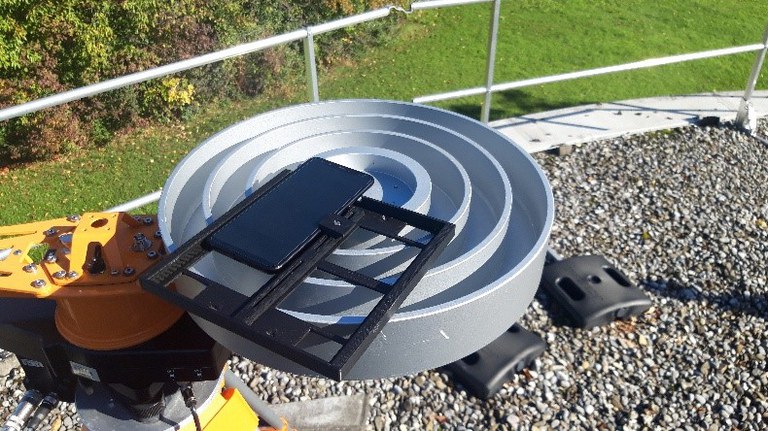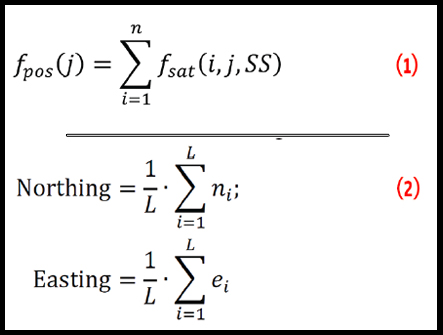Researchers at the Universität der Bundeswehr München (German Federal Armed Forces University, Munich) have performed real-time kinematic (RTK) positioning with dual-frequency smartphones, using the GNSS raw measurements to the user via the Android API. With a special set-up of a smartphone placed on a choke ring platform to mitigate multipath effects from ground reflection, and processing the results with a high-quality post-processing software, they estimate a horizontal precision achieved at the 1–2 cm level.
The introduction of the Broadcom BCM47755 dual frequency chip in 2017 and the availability of GNSS raw measurements to the user via the Android API have set in motion new investigative efforts around the world. The availability of carrier-phase measurements in smartphones and the market-need for centimeter-level accuracy has inspired researchers to work towards precise positioning with smartphones. Among the difficulties they confront: cycle slips, and phone duty cycling that limits the GNSS chip from continuously tracking.
Authors Himanshu Sharma, Mohamed Bochkati, Gerhard Kestel and Thomas Pany identified a few key factors in their path to successful results:
- Visibility of enough dual-frequency GPS/Galileo satellites
- Robust carrier-phase processing algorithms capable of handling a large number of measurement outliers
- Handling of the ground multipath
For a fuller account of their experiment, see here. They emphasize that the smartphone is an unaltered Xiaomi MI8 running Android Pie (no rooting, no hardware modification).
Interested researchers are invited to download the RINEX data of this experiment and to confirm the high precision.
The research work was done under the project RAMBO – “Real Time Kinematic ” Positionierung am Mobiltelefon (FKZ: 50NA1720 ) funded by Federal Ministry for Economic Affairs and Energy and managed by German Aerospace Agency (DLR).




